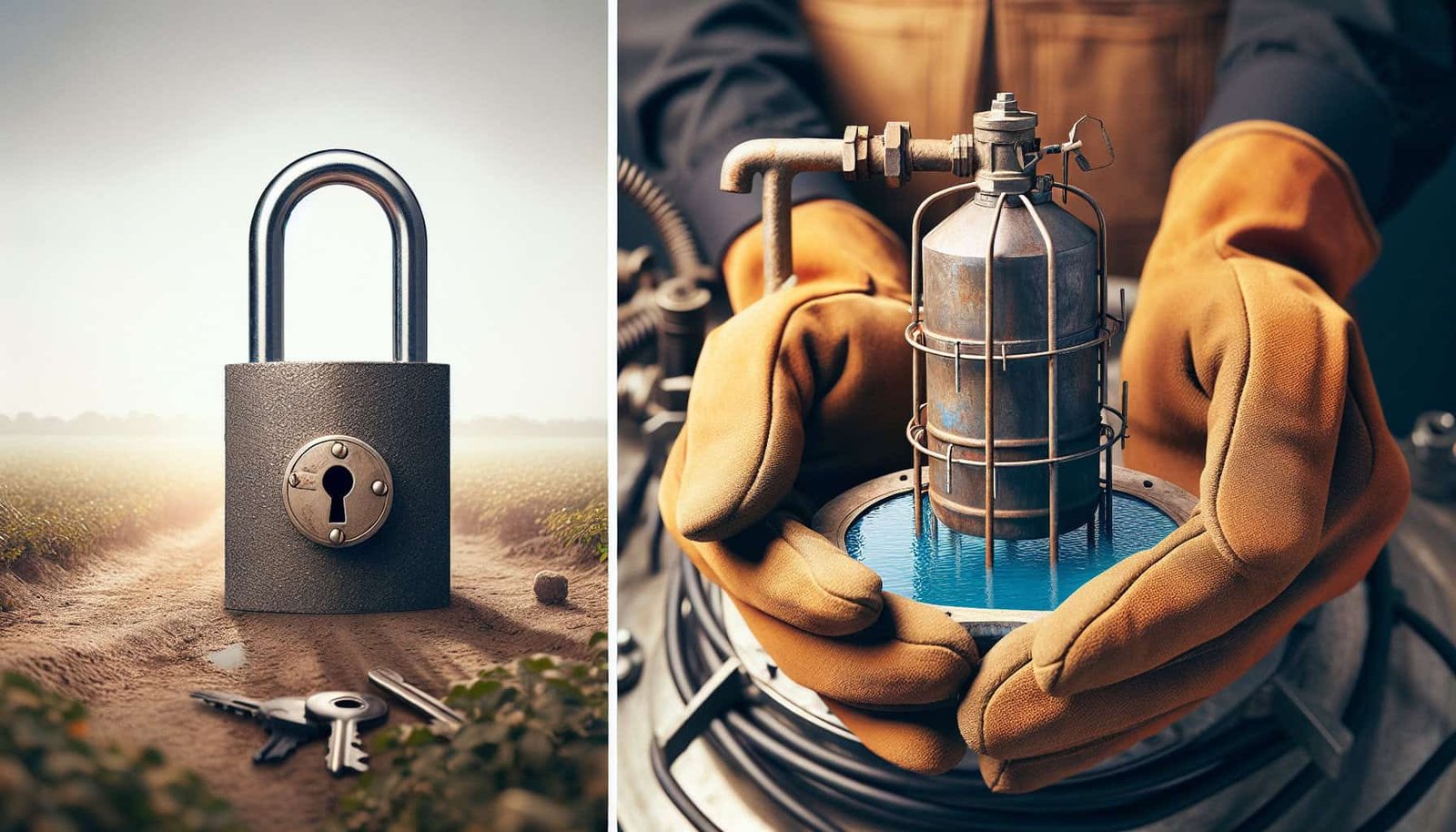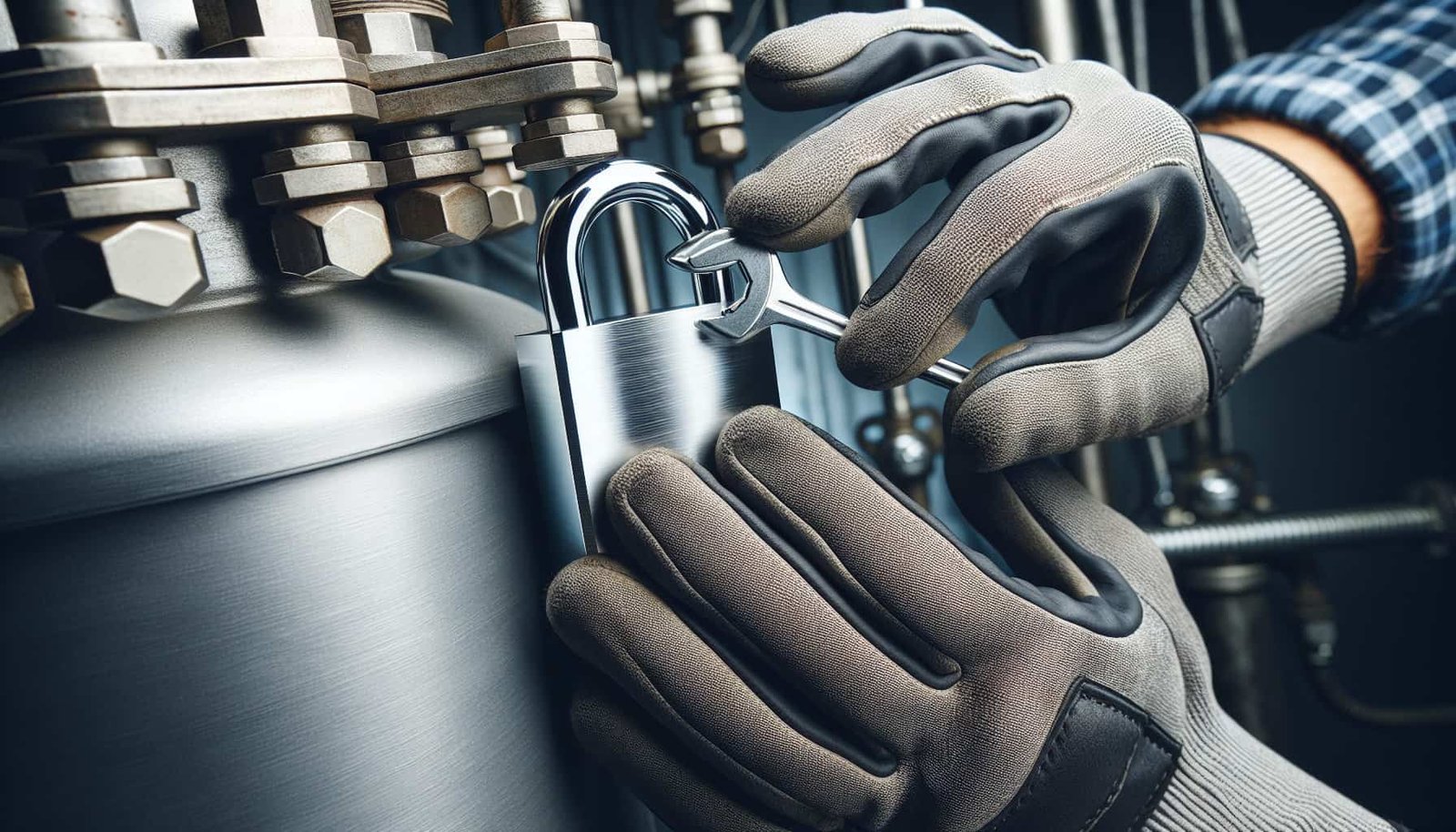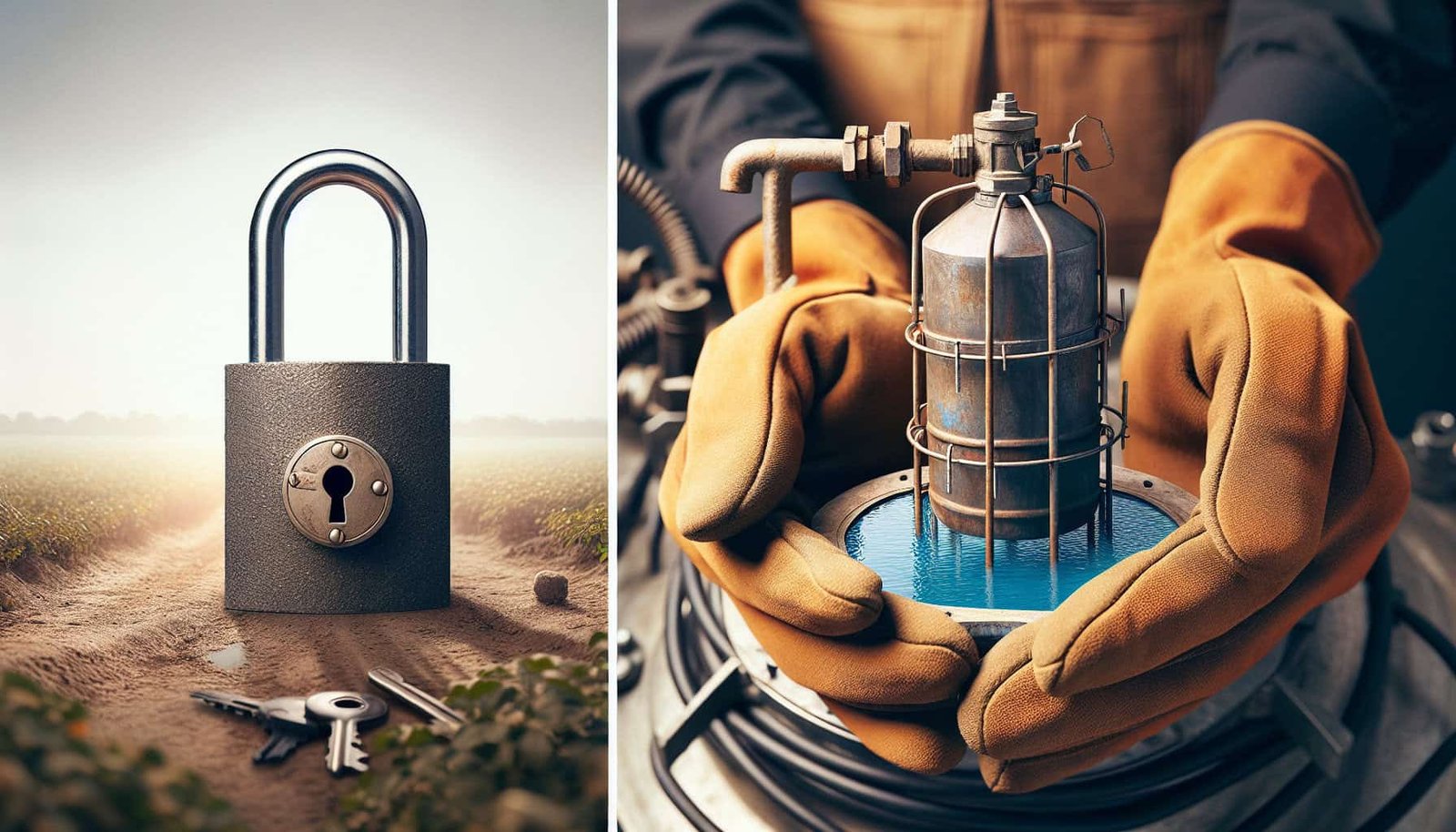If you own a well and rely on well water for your household needs, ensuring the safety of your water supply is of utmost importance. One key factor to consider is the maintenance of your well water pressure tank. Neglecting proper maintenance practices can lead to safety issues that may compromise the quality and reliability of your well water. But fear not, because in this article, we will explore effective ways to protect your well from potential safety concerns associated with pressure tank maintenance. So, let’s delve into some valuable insights and tips to keep your well water system in top-notch condition!

Importance of Well Water Pressure Tank Maintenance
Well water pressure tanks play a crucial role in maintaining a steady and reliable water supply in your home. These tanks help regulate water pressure, ensuring that it remains consistent and suitable for everyday activities such as showering, washing dishes, and doing laundry. However, like any other piece of equipment, well water pressure tanks require regular maintenance to function properly and avoid potential risks.
Understanding the role of well water pressure tanks
To comprehend the importance of maintaining well water pressure tanks, it’s essential to understand their role in the overall well water system. These tanks store water and help regulate the pressure by using a bladder or air cushion system. When the pump fills the tank, the air cushion compresses, creating pressure against the water. As you use water in your home, the tank releases the stored water, maintaining a consistent pressure.
The risks of neglecting well water pressure tank maintenance
Neglecting the maintenance of your well water pressure tank can lead to various issues that may affect the overall efficiency and safety of your well water system. One major risk is fluctuating water pressure, which can result in inconsistent flow and inadequate water supply. This can be frustrating and inconvenient for daily activities.
Another risk is frequent pump cycling, where the pump turns on and off more frequently than usual. This can lead to premature wear and tear on the pump, reducing its lifespan and potentially causing costly repairs or replacements.
Rapid pressure drops can also occur when the tank is not functioning properly. This can lead to water hammering, a phenomenon in which pipes make loud banging noises due to the sudden pressure changes. Water hammering can damage pipes, fittings, and even appliances connected to your well water system.
Signs of a Malfunctioning Well Water Pressure Tank
To identify whether your well water pressure tank is malfunctioning, look out for the following signs:
Fluctuating water pressure
If you notice inconsistent water pressure while using your faucets, showerheads, or other water fixtures, it may indicate a problem with your well water pressure tank. The pressure should remain relatively stable during regular usage.
Frequent pump cycling
If you hear the pump turning on and off more frequently than usual, it is likely due to a malfunctioning pressure tank. The pump should only cycle on when the pressure drops below a certain level and off when the pressure reaches the desired level.
Rapid pressure drops
When the pressure drops rapidly while using water fixtures, it suggests that the pressure tank is not functioning properly. This can be accompanied by reduced water flow or water hammering.
Water hammering
If you hear loud banging noises in your pipes when you turn off faucets, it indicates water hammering. This occurs when the pressure tank fails to maintain a stable pressure, causing sudden pressure changes and resulting in the noise.

Proper Maintenance Practices for Well Water Pressure Tanks
Ensuring proper maintenance of your well water pressure tank is crucial to prevent malfunctioning and maximize its lifespan. Here are some maintenance practices to follow:
Regular inspections
Perform routine visual inspections of your well water pressure tank to check for any visible signs of damage or leaks. Look for rust, corrosion, or any other form of deterioration that may affect the tank’s performance.
Checking for leaks and corrosion
Regularly inspect the tank’s fittings, pipes, and connections for any signs of leaks. Additionally, check for corrosion on metal components, as this can weaken the tank’s structural integrity.
Maintaining appropriate water pressure
Monitor the water pressure in your home regularly. If there are any significant fluctuations, it may indicate a problem with the pressure tank. Ensure that the tank’s pressure is set correctly according to the manufacturer’s guidelines.
Cleaning or replacing air charge
Over time, the air charge in the pressure tank may become compressed or depleted, affecting its performance. Consult the manufacturer’s instructions on how to clean or replace the air charge to maintain optimal pressure regulation.
Flushing the tank
Regularly flush the tank to remove sediment and buildup that can accumulate over time. Sediment can affect the tank’s efficiency and lead to clogs or blockages in your well water system.
Hiring a Professional for Well Water Pressure Tank Maintenance
While some maintenance tasks can be done by homeowners, it’s recommended to hire a professional well service technician for more complex maintenance procedures. Here’s why:
Benefits of professional maintenance
Professional technicians have the expertise and knowledge to identify potential issues and address them effectively. They can also ensure that all maintenance tasks are performed correctly, reducing the risk of further damage to the pressure tank or the entire well water system.
Finding a reputable well service technician
When hiring a professional for well water pressure tank maintenance, it’s crucial to find a reputable technician with experience in working with well systems. Seek recommendations from friends, family, or neighbors who have well water systems or consult online reviews to find a reliable service provider.
Scheduling regular maintenance visits
Establish a regular maintenance schedule with your chosen technician. Regular inspections and maintenance visits will help identify any potential issues before they become major problems, ensuring the optimal performance and longevity of your well water pressure tank.

Preventing Contamination and Safety Hazards
Ensuring the safety and purity of your well water is essential for the health and well-being of your household. Here are some practices to prevent contamination and safety hazards associated with well water pressure tank maintenance:
Ensuring proper well construction
Have your well constructed and maintained in accordance with local regulations and guidelines. Proper construction techniques, including sealing the well and installing casing, help prevent contamination from surface water or other contaminants.
Installing backflow preventers and check valves
Backflow preventers and check valves are essential components that prevent water from flowing back into the well system, thus avoiding potential contamination. Have these devices installed and regularly checked by a professional technician.
Monitoring for bacterial contamination
Regularly test your well water for bacterial contamination, such as E.coli or coliforms. This can be done through water sampling and testing by a certified laboratory. If contamination is detected, take immediate action to disinfect the well and rectify the issue.
Protecting the well from contamination sources
Avoid storing or using chemicals, fertilizers, pesticides, or other potentially harmful substances near the well. These substances can seep into the ground and contaminate the water supply. Maintain a safe distance between your well and any potential contamination sources.
Safe disposal of chemicals or waste near the well
When disposing of chemicals or waste materials, ensure that they are properly stored and disposed of according to local regulations. Improper disposal can lead to groundwater contamination, which can pose serious health risks.
Safety Precautions during Well Water Pressure Tank Maintenance
Performing maintenance on your well water pressure tank requires strict adherence to safety precautions to protect yourself and your well system. Here are some precautions to take:
Shutting off power to the pump and tank
Before starting any maintenance procedures, ensure that the power to the pump and pressure tank is turned off. This will prevent any electrical accidents while working on the tank.
Draining the tank and depressurizing the system
Before opening the tank for maintenance, drain the water and depressurize the system completely. This will prevent any accidental release of water or pressure that can cause injuries.
Using appropriate tools and safety gear
When working on the pressure tank, use the correct tools recommended by the manufacturer. Additionally, wear appropriate safety gear, such as gloves and goggles, to protect yourself from any potential hazards.
Avoiding contact with chemicals
If you need to handle any chemicals during maintenance, follow proper safety protocols and use gloves and other protective equipment to avoid direct contact. Chemicals can be harmful if they come into contact with your skin or eyes.
Safely disposing of old tank or parts
If you need to replace the pressure tank or any parts during maintenance, ensure that the old tank or parts are disposed of safely. Consult local guidelines on proper disposal methods or contact a professional waste disposal service.

Common Mistakes to Avoid in Well Water Pressure Tank Maintenance
To ensure the effectiveness of your well water pressure tank maintenance, avoid these common mistakes:
Overlooking maintenance tasks
Regular maintenance is crucial for the optimal functioning of your well water pressure tank. Neglecting maintenance tasks can lead to reduced efficiency and potential risks to your well water system.
Using incorrect pressure settings
Ensure that the pressure settings of your well water pressure tank are set correctly according to the manufacturer’s guidelines. Incorrect pressure settings can cause fluctuating water pressure, excessive pump cycling, or other issues.
Ignoring signs of malfunction
If you notice any signs of malfunction in your well water pressure tank or well water system, such as fluctuating pressure or unusual noises, do not ignore them. Promptly address these issues to prevent further damage and ensure the safety of your water supply.
Improperly installing or replacing tanks
If you’re attempting to install or replace your well water pressure tank yourself, make sure to follow the manufacturer’s instructions carefully. Improper installation can lead to leaks, malfunctioning, or even damage to your well water system.
Insufficient flushing or cleaning
Regularly flushing and cleaning your well water pressure tank is essential to remove sediment and prevent clogs or blockages. Ensure that you thoroughly flush and clean the tank according to the manufacturer’s recommendations.
Educating Yourself About Well Water Systems and Tanks
To better understand and maintain your well water pressure tank, consider educating yourself on the following aspects:
Understanding well water system components
Learn about the different components of your well water system, including the well itself, pressure tank, pump, and other associated equipment. Understanding how these components work together will help you identify potential issues and perform basic troubleshooting.
Researching well water regulations and guidelines
Familiarize yourself with local regulations and guidelines for well water construction, maintenance, and testing. This knowledge will ensure that your well water system meets the necessary standards for safety and efficiency.
Keeping up with industry advancements
Stay updated on industry advancements and new technologies related to well water systems and pressure tanks. This will allow you to make informed decisions when it comes to upgrading your equipment or implementing new maintenance practices.
Seeking professional advice
If you have any questions or concerns about your well water pressure tank or well water system, don’t hesitate to seek advice from a professional. Well service technicians can provide valuable insights and guidance tailored to your specific situation.

Ensuring Emergency Preparedness for Well Water Pressure Tank Issues
While maintaining your well water pressure tank is crucial, it’s also essential to be prepared for potential emergencies. Here are some measures to ensure emergency preparedness:
Having a backup water source
In case of any major issues with your well water system, having a backup water source such as stored water or access to a nearby water supply can ensure that your household’s water needs are met during an emergency or while performing repairs.
Maintaining an emergency repair kit
Keep an emergency repair kit handy, containing essential tools, spare parts, and repair materials specific to your well water pressure tank. This will enable you to address minor issues promptly and minimize downtime.
Knowing how to manually operate the water system
Understanding the manual operation of your well water system can be valuable during power outages or other situations where the pump or pressure tank may not be functioning normally. Be familiar with the steps involved in manually operating the system and ensure that you have the necessary equipment to do so.
Conclusion
Taking proper care of your well water pressure tank is essential for maintaining a reliable and safe water supply in your home. Regular maintenance, inspection, and adherence to safety precautions will help ensure the optimal performance of your well water system while minimizing the risk of contamination or safety hazards. By educating yourself, seeking professional help when needed, and being prepared for emergencies, you can protect your well and safeguard the well-being of your household. Remember, a well-maintained pressure tank leads to a well-functioning water system and peace of mind.

